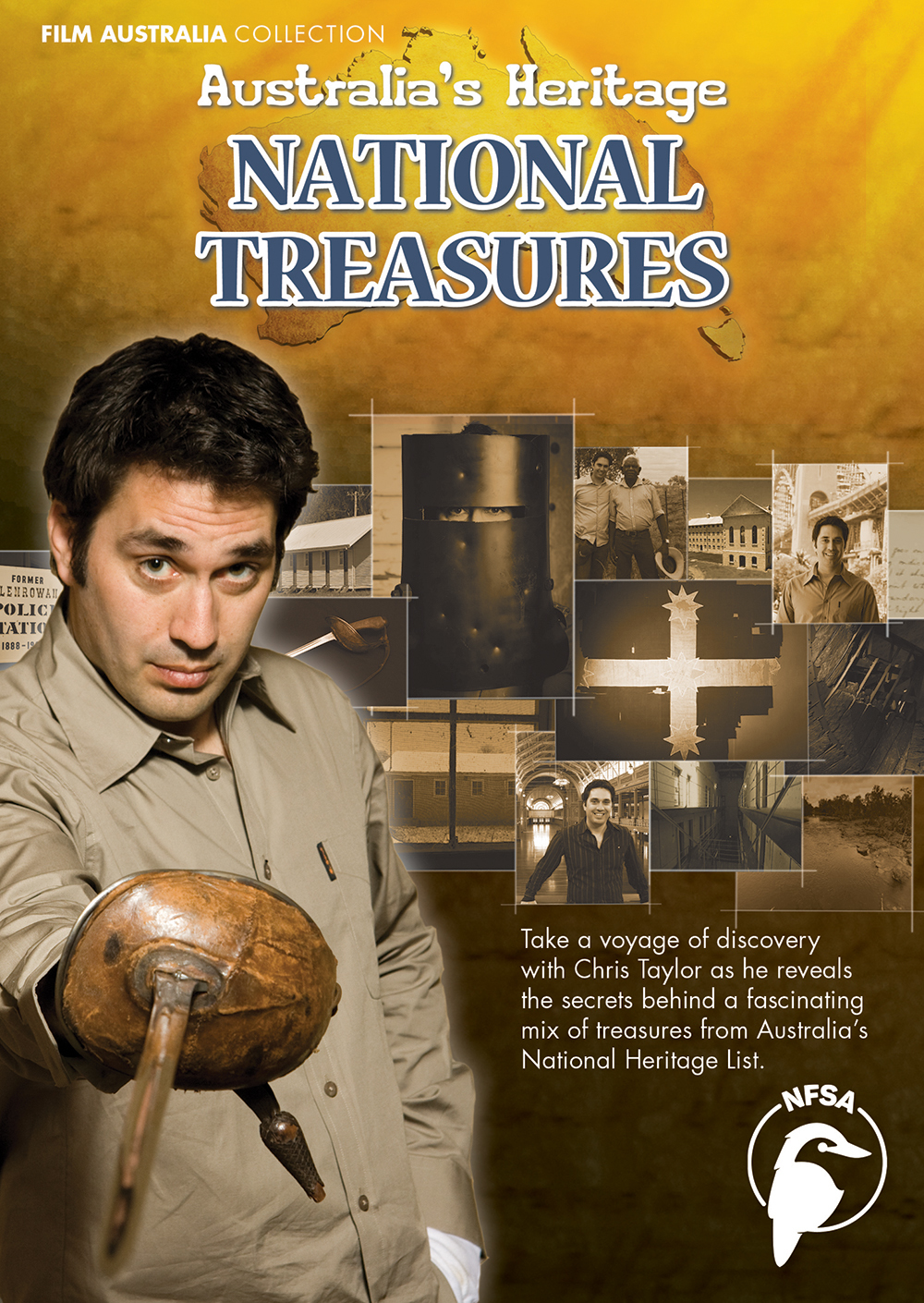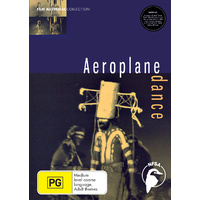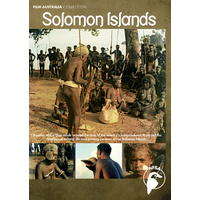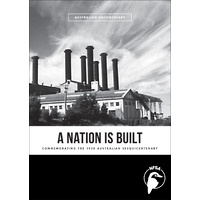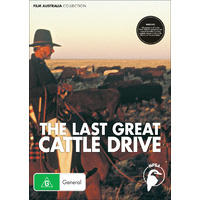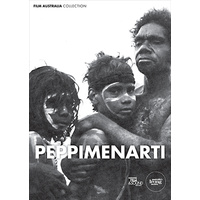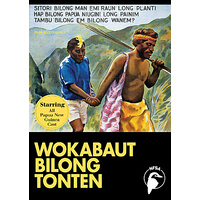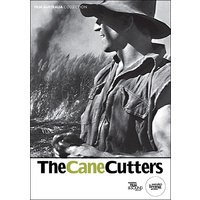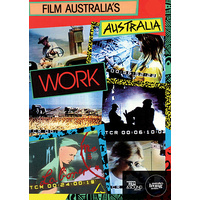2009, 10 x 5 Minutes. Exempt from classification.
Take a voyage of discovery with Chris Taylor as he reveals the secrets behind a fascinating mix of treasures from Australia's National Heritage List. As Chris travels around Australia delivering historical snapshots of places from the National Heritage List, he talks with experts and enthusiasts, revealing fascinating insights into our famous and not-so-famous past.
EPISODES
Eureka Flag Since it fluttered above a group of rebellious gold miners at the 1854 Eureka Stockade, the flag of the Southern Cross has become a symbol of democracy and defiance. Now carefully preserved at the Art Gallery of Ballarat in Victoria, the flag, and the National Heritage-listed Eureka Stockade Gardens, remain potent symbols of Australia's only revolution - a battle that was over in less than half an hour and claimed 38 lives.
Ned Kelly's Armour From violent cop killer to a champion of the working class, bushranger Ned Kelly is a solid gold Australian icon and folk hero. By the time Kelly was captured in June 1880 after the famous siege at Glenrowan the bearded bushranger had won the hearts of Victorians. When he was sentenced to hang five months later for the murder of three policemen at Stringybark Creek, 30,000 people signed a petition demanding clemency.
Royal Exhibition Building During the 19th century, Melbourne's Royal Exhibition Building was an architectural masterpiece which showcased Australia's arrival on the world stage as an economic powerhouse. It was 1888, the golden age of exhibitions, and Victoria, initially fuelled by the gold rush, boasted the largest exhibition building in the world with its annexes combining to cover 14 hectares. Still standing, it is the only exhibition building from that period remaining in the world.
Francis De Groot's Sword When right-wing agitator Francis De Groot, who belonged to a monarchist militia called the New Guard, upstaged the 1932 opening of the Sydney Harbour Bridge and sliced through the ceremonial ribbon, the antique sword he wielded cemented its place as an Australian national treasure.
Fremantle Prison Built by convicts in the 1850s, Fremantle Prison is the best-preserved convict-built prison in Australia and is part of the earliest phase of European settlement in Western Australia.
Batavia Shipwreck Ruins Stone ruins on Western Australia's remote West Wallabi Island are the oldest structures built by Europeans in Australia and tell a tale of mutiny and murder. Built as a fort in 1629 by survivors of the shipwrecked Dutch merchant ship 'Batavia', the National Heritage-listed shipwreck site provides a lasting memorial to the treachery of under-merchant Jeronimus Cornelisz, who had conspired to mutiny and steal the treasure-laden ship before it struck a reef. The mutineers murdered more than 120 shipwreck survivors before most were captured, tried and hanged for their crimes.
Rules of AFL Ten hand-written rules displayed in a museum in the heart of the National Heritage-listed Melbourne Cricket Ground hold the key to a great Australian sport. If Australian Rules football was a religion, these rules would be its bible.
Bonegilla Migrant Camp More than 300,000 migrants had their first taste of Australian life at the Bonegilla Migrant Camp in Victoria before moving out to transform Australia socially and culturally. Established in 1947 to house post-war immigrants, the National Heritage-listed property was a Spartan former army camp with the most basic facilities. Isolated and primitive, it was freezing in winter, hot in summer, had shared bathrooms and laundries, and pit latrines. Riots erupted in 1952 after the suicide of three young residents triggered widespread dissatisfaction with the standard of living. Conditions improved soon afterwards and the camp continued operating until 1971. Today, Block 19 is all that remains of 28 blocks.
Wattie Creek Wattie Creek entered Australian folklore as the birthplace of the Aboriginal land-rights movement when Prime Minister Gough Whitlam visited the Gurindji people to grant them deeds to their land. The Gurindji rose to national prominence in 1966 when, led by stockman Vincent Lingiari, 200 Aboriginal employees quit slave-labour conditions at Wave Hill cattle station and walked the now National Heritage-listed Wave Hill Walk-off Route to set up a community at Wattie Creek, which they renamed Daguragu. The walk-off began a nine-year labour strike that ended with a win for Indigenous land rights.
Naracoorte Fossil Mammal Site The extraordinary build-up of fossils in South Australia's World and National Heritage-listed Naracoorte Caves spans at least 350,000 years and provides rare evidence of Australia's distinctive fauna and the way it has evolved. Discovered in 1969, the site covers 300 hectares and gives scientists a snapshot of Pleistocene life in south-east Australia. Only four per cent of the site has been excavated and already scientists have discovered 100 species, a quarter of them extinct, including the marsupial lion, a giant kangaroo and a wombat-like animal the size of a four-wheel drive.
A Screen Australia National Documentary Program produced in association with the Australian Broadcasting Corporation and made with the assistance of the Department of the Environment, Water, Heritage and the Arts. © 2011 National Film and Sound Archive of Australia.
FREE Teachers' Notes - Download here
(200801100)
Writer/Director: Matthew Thomason
Year: 2009
Running Time: 10 X 5 mins
Classification: Exempt from classification
Curriculum Links: Australian HIstory; Civics; Indigenous Studies; English, SOSE/HSIE.
SEE ALSO
Prime Ministers’ National Treasures, The
| SKU | 200801100 |
| Brand | Film Australia |

